The Walther PPK is a legendary design that paved the way for a half-century of handgun development. Like the real life and fictional heroes and villains that carried it, the PPK has become something of an archetype. It exists and has been little changed since it was introduced in 1931. But the landscape the PPK exists in did change. The end of World War II brought PPK production out of Germany for the first time. The Gun Control Act of 1968 birthed the PPK/S model. The PPK debuted in .32 ACP but today the design is old-school .380. Although the .380 is a bit more powerful and produces a bigger hole in whatever you are shooting, the PPK design is at its most shootable in .32 caliber. In 2024, Walther reintroduced the PPK and PPK/s in .32 ACP. Ever a .32 caliber fan, I picked up the new PPK/s and got to work.
Walther PPK/S: Quirks and Features
The Walther PPK/s has remained largely unchanged since getting a longer PP grip after 1968 and the PPK design itself has seen precious few modifications since its introduction in 1931.
With its longer grip, the PPK/s in .32 ACP holds eight rounds of ammunition with either a flat base plate or extended magazine, both of which ship in the case with the pistol. It is all-stainless steel and tips the scales at 1 pound, 9.5 ounces fully loaded.
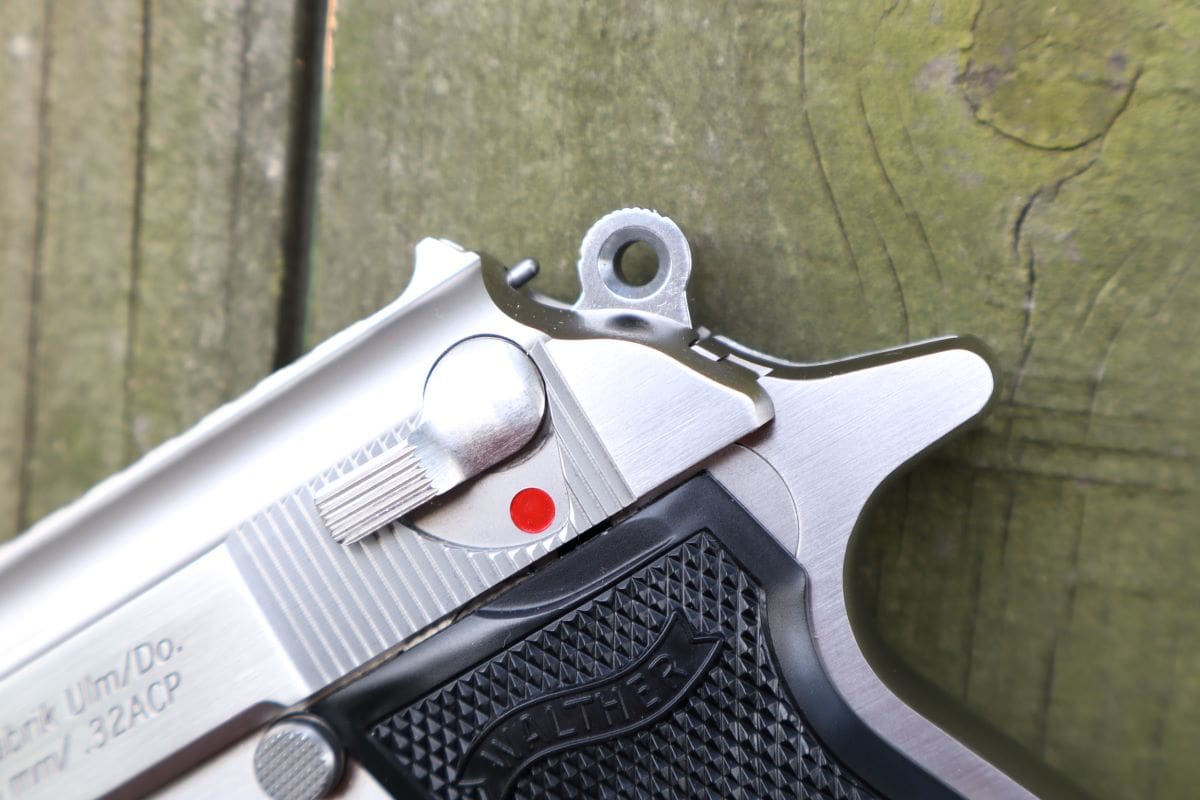

The pistol features a de-cocker/safety on the left side of the frame and a loaded chamber indicator that protrudes above the exposed hammer. It is a double-action/single-action pistol that can be fired with one long pull of the trigger to cock the hammer and fire the pistol. Or it can be fired with the hammer to the rear for a lighter pull. On firing, the hammer is automatically re-cocked by the slide. When you are done shooting, lowering the de-cocker lever safely drops the hammer and deactivates the trigger.
The PPK/s has an American-like magazine release although it is mounted high on the left side compared to modern American handguns. It has no magazine release but has an internal slide stop that locks the slide back on an empty magazine.
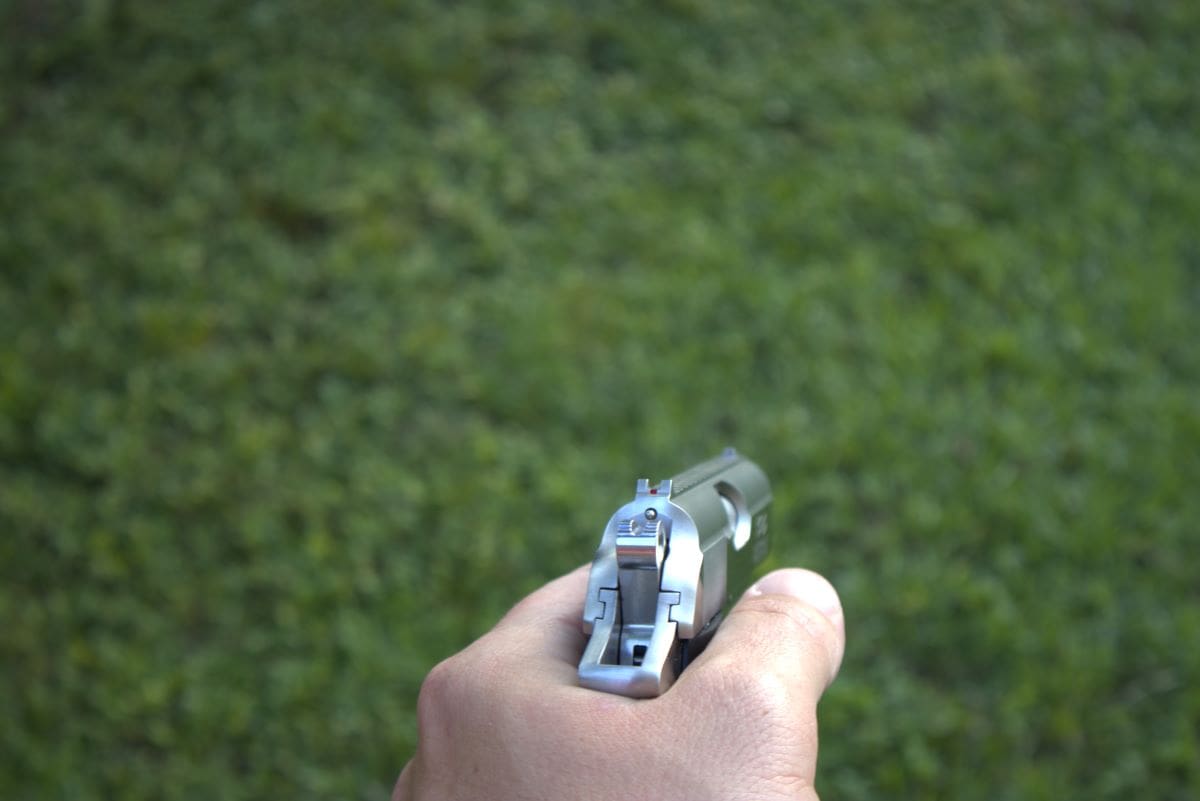

While the first generation of PPKs had drift adjustable sights, this new model has small fixed iron sights milled into the slide with a burnished sighting plane in between. Although a good pair of PP wood grips would set off this polished-stainless pistol, it ships with functional checkered plastic grips.
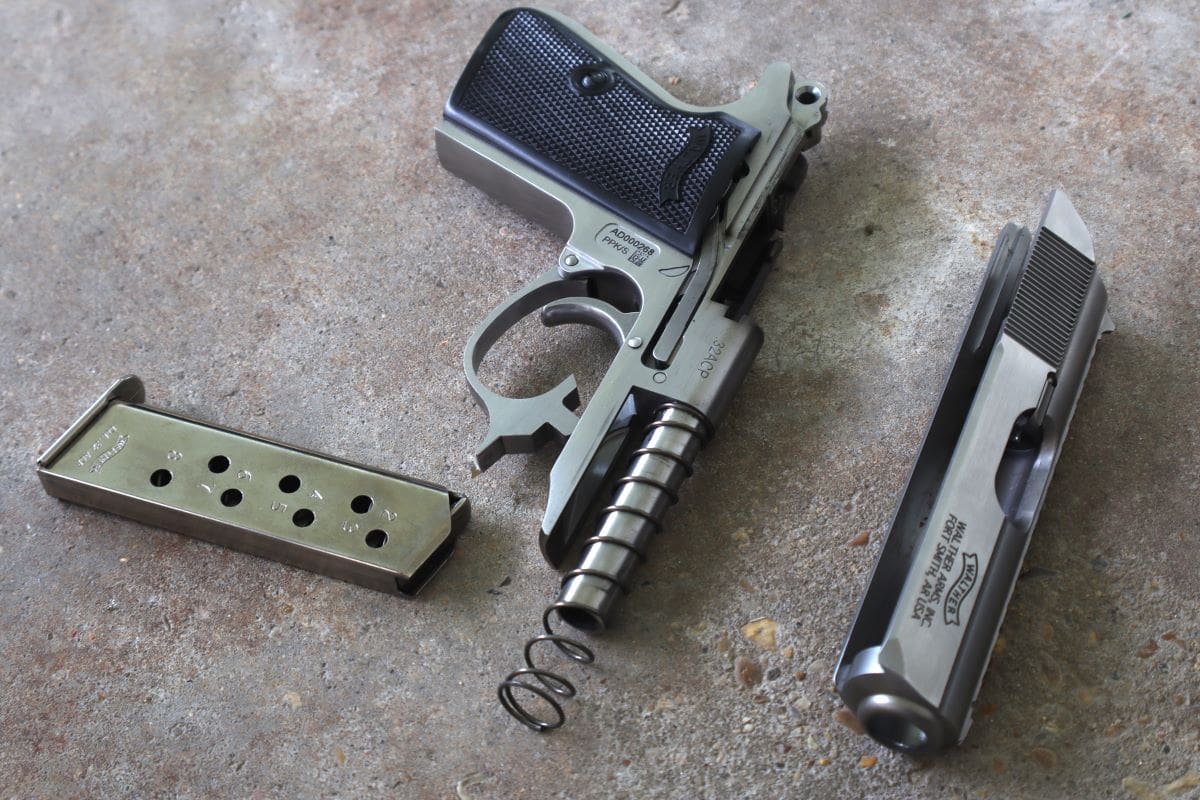

Like all PP models, this one is a straight blowback design with a fixed barrel and a recoil spring over the barrel, which doubles as a guide rod. Disassembly is as simple as pulling down the trigger guard, moving it to one side of the frame, and bringing the slide back and up to remove the slide and recoil spring for cleaning.
Quick Specs:
- Model: PPK/s
- Caliber: .32 ACP
- Capacity: 8+1
- Barrel Length: 3.3 in.
- Overall Length: 6.1 in.
- Width: 1 in.
- Weight: 1 lb., 9.5 oz. (loaded)
More on the .32 ACP
The .32 ACP, otherwise known as 7.65 Browning, was designed in 1899 for John Browning’s first slide-operated semi-auto pistol, the FN Model 1899. This semi-rimmed low pressure cartridge was designed for straight blowback pistols. Standard loadings consist of a 71-grain FMJ bullet traveling at about 800 to 900 feet per second, although some lighter 60-grain jacketed hollow point offerings can up that speed by a bit more.
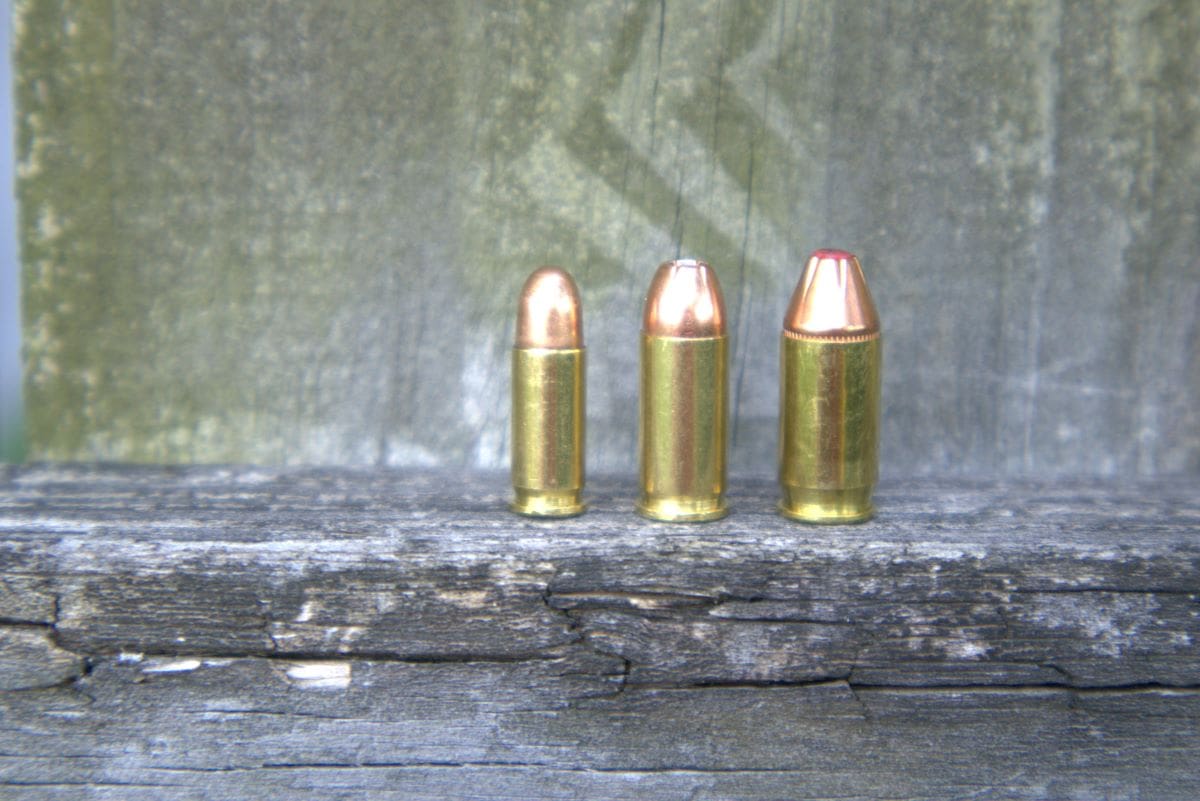

The .380 ACP was developed for the same class of handguns in 1908 and boasted a bigger bullet. However, the .32 ACP was more popular. The PP and PPK pistols debuted in .32 and it remained the most popular chambering for those pistols, although the growing American market came to prefer the .380 model. The .32 has the disadvantage of having a semi-rimmed case, so it is possible to lock rims if the rounds are not carefully loaded. However, this lower powered round boasts less recoil than a comparable .380 and gives surprisingly good penetration equivalent with the bigger round.
On the Range with the Walther PPK/s in .32 ACP
I do not actively seek out Walther products, but I have owned a West German PP in .32 and an American-made PPK in .380. The newer .380 was very accurate but with enough sharp edges to dress a deer and was unpleasant to get through a box of ammo. The old PP was well rounded and pleasant, but I did not know how the new PPK/s would stack up.
Upon taking it into inventory, I found it to be a well-finished pistol with no milling marks and the only burr I could detect was a sharp edge on the upper side of the de-cocker lever that tended to bite into my thumb when dropping the lever into the safe position. I checked the area around the beavertail and near the muzzle but found no other sharp edges in the places I would expect. On doing some dry fire practice, I did notice the PPK/s to have a stout double-action trigger pull. You have to stack weight on the trigger until it suddenly slips, cycles and drops. In terms of pull weight, it exceeded my Lyman trigger pull gauge, and I would estimate it to be about 20 pounds. The single-action pull is short and light, breaking at 4 pounds, 1 ounce. There is no discernable reset to the trigger, but that comes with the territory with the PPK design.
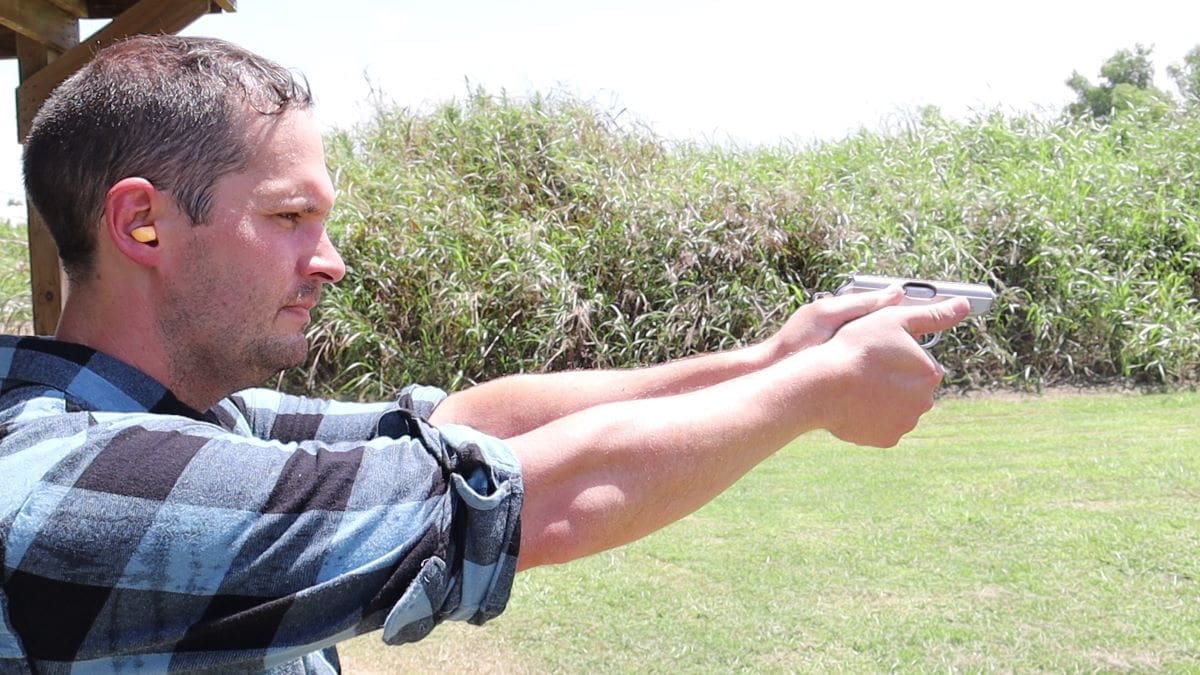

Heavy double-action trigger notwithstanding, it was of little consequence for me at the range. I am used to running double-action revolvers and a Polish P-64 without disturbing the sights, but I imagine a scenario where some shooters might opt to thumb back the hammer for their first shot. But in terms of actual shooting, the PPK/s is a hoot.
It is dense, all-steel and stable in the hand unlike many lightweight polymer guns. The small milled sights made it easy to print groups on paper and hit static targets out to 50 yards, but up close they can be hard to pick up when performing shooting drills at which point the PPK becomes a point shooter’s delight as it is easy, if not tempting, to rip off all eight rounds quickly. The .32 ACP has next to no muzzle rise and the weight of the slide and spring are more than enough to soak up recoil before it gets to your palm.
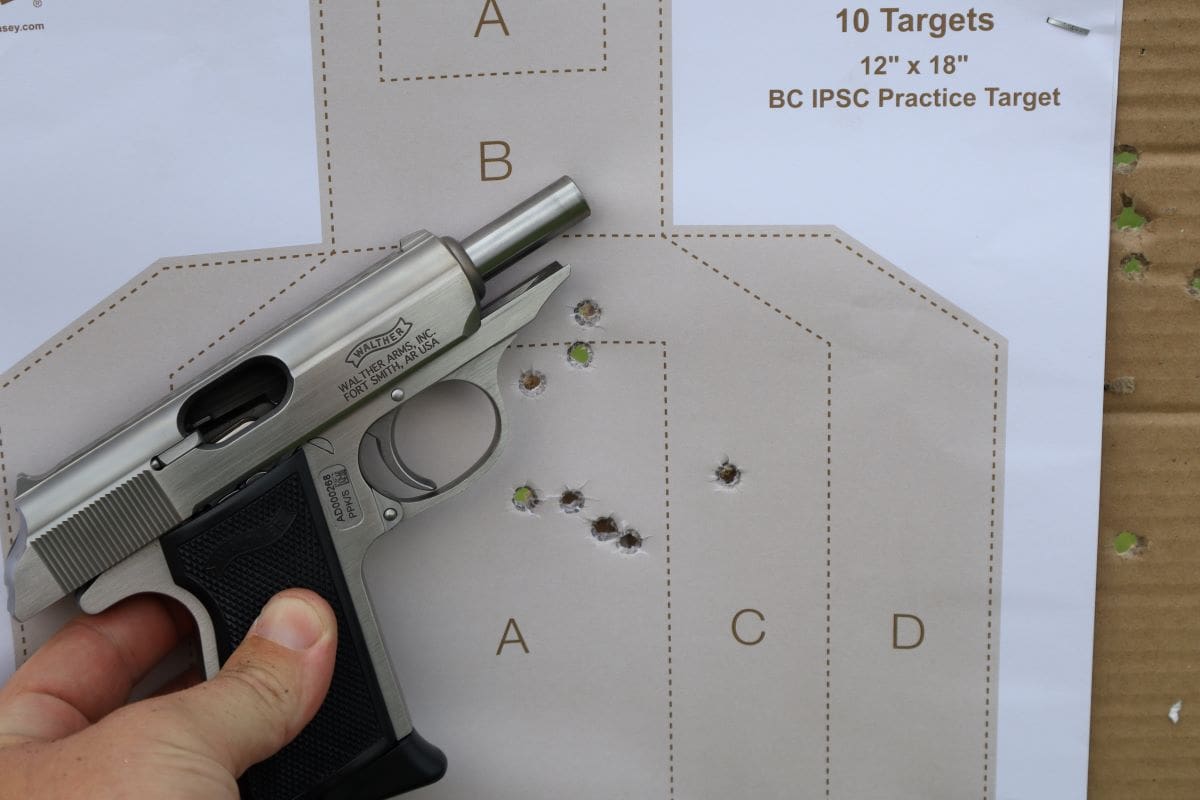

In terms of accuracy, the .32 ACP combined with the Walther’s fixed-barrel design can yield impressive results. The only kicker is that the fixed sights on these recent production PPKs is that they come with fixed sights that are either on or they are not. Mine had perfect windage, but my rounds favored high. Using Magtech 71-grain FMJ, my rounds generally hit two inches higher than the point of aim. I ran a pack of Buffalo Bore +P 75-grain hard cast loads and got even closer to the point of aim. The variety of 60-grain hollow points, including Speer Gold Dots, PMC Bronze and Hornady Critical Defense, favored four inches high but produced the best accuracy grouping-wise. PMC Bronze, overall, was the most accurate, and I could drill eight rounds into a two- to three-inch group at 10 yards.
In terms of ergonomics, this new model is little changed from other PPK models. It is a common criticism of the platform. The magazine release button is a bit higher than on most modern American pistols, but it is a far cry from the typical European-style paddle or heel release. The de-cocker is positive and the loaded chamber indicator pops out above the hammer readily to let you know you have a live round in the chamber. The beavertail is more than long enough to prevent hammer bite and the exposed backstrap, which can punish the web of your hand if you are using a .380 PPK, simply doesn’t snap back under recoil enough with the .32 to be a bother. The longer PP grip incorporated on the PPK/s gives you extra ammunition and more than enough grip for larger hands, which makes the pistol ever more shootable.
I hit a few speed bumps in the reliability department early on. Despite a quick spritz of Rem oil before firing my first shots, I had three failures to fully eject out of my first box of 50 rounds of PMC Bronze. But without any additional cleaning or remediation, the problem did not reoccur, and I ran through the rest of my ammunition without a failure to cycle or any dud rounds. Much like my previous experiences, this .32 Walther was a largely drama-free shooter.
The Bottom Line: The PPK/s in .32 as a Shooter’s Pistol
Shooters are drawn to the Walther PPK because of its unique place in firearms history. It is a design that has been in continuous production with very few changes since debuting in 1931. It went on to inspire countless Cold War designs and capture the imagination of millions in spy thrillers like the James Bond franchise.
I am sure some PPK fans have been yearning for the reintroduction of the .32 ACP PPK simply because it was the model Bond carried from his film inception until the latter Brosnan era. Indeed, the pistol was picked for the film because the .32 consistently outsold the .380 version until the pistol made serious inroads with American shooters who preferred the bigger round.
But the PPK was first introduced as a .32 and it is a design that really lends itself well to that caliber. Going up to .380 seems to amplify the detriments of this older design. Chambering the PPK/s in .32 only amplifies the enjoyment and shootability of this storied platform without giving up much in return. Although my run with the PPK/s in .32 is not perfect, it is perfect for Bond fans, Weimar Germany aficionados, and, perhaps, those who need a low-recoil option or simply just want a very cool gun to shoot and carry.
Check out my video review of the Walther PPK/s in .32 ACP below:
Read full article here


